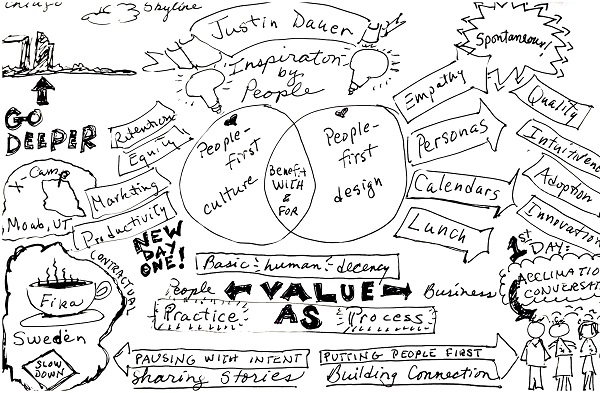Untangling Features to Improve Customer Experience and Company Growth
By Laura Stringer
Tech companies exist in a competitive, rapidly changing space. Any company with a software offering has to provide the features their customers want, the features their customers don’t yet know they need and the features that will help them “keep up with the Joneses” and thus stay in the game.
Over time, without careful planning, those features can pile up and get tangled to the point where they’re causing problems. Instead of making customers happy, they get in the way of usability, customer experience and company growth.
When that happens, leaders have two options: try to make everything look better with a redesign or actually fix the problem. The redesign approach is tempting: It’s relatively cheap and fast, and has obvious impact. Unfortunately, a surface fix only addresses symptoms; the problems are still there, and they’ll become painful again soon.
To develop software that enables growth, rather than hinders it, companies must address the underlying problems. Here are five steps to untangling features and setting a product up for continued success.
Find out where the problems lie
Start with a comprehensive assessment of the entire product, end-to-end, from a user’s perspective. Get opinions from outside the company. Even better, talk to actual customers and get their take on what’s working — and what’s not.
Checking analytics may help, with two caveats: First, you should look at the metrics that actually address user goals and behavior; second, an analytics review does not replace actually talking to people.
Improve task flows
Every task a user tries to do should be easy to complete, with a consistent experience throughout. When features get added with insufficient regard to experience, task flows suffer.
Getting the features untangled means getting the task flows untangled. The first step is to understand what tasks are important to users. Then it’s time to map out the steps needed to complete each task, note where things break down, and design improved flows.
Improve the customer journey
Software companies are more than just a software product. There’s also a website, sales team and customer support desk — and customers interact with all of them. It’s important that the customer’s journey go
smoothly from one touchpoint to the next, within the product but also where the product meets the brick-and-mortar world.
And if a company offers more than one product, it’s important to consider integrations among them. After all, customers may buy more than one! Navigation should be consistent within and among products. If a task takes a user from one platform to another, it should flow smoothly to the second product (and back again).
Task flows and customer journeys are where the bulk of the thinking lies, but also the bulk of the opportunities. An in-house user-experience (UX) architect can help a lot with these steps, and it may be worthwhile to seek out a customer-experience (CX) expert or digital strategist to identify the best “big picture” path forward.
Redesign
Redesigns should never be a first step. And sometimes they’re not necessary at all. But if a company really wants to do a redesign after the foundational work, then, sure, redesign the interface. “Pretty” is definitely very important for many systems, and can even contribute to usability. Just make sure that any redesigns are done with intention and an eye on the customer journey.
Keep this from happening again!
While any complex system needs an overhaul from time to time, the trick is to keep those upheavals to a minimum. That means governance. Done right, governance creates simplicity, efficiency and quality control.
Establish a gatekeeping process for proposed new features that answers the following questions: Is there a legitimate customer demand? How will this feature fit into the existing customer journey? How will the new feature be documented and communicated to users?
Set up regular reviews of the overall product to get on top of any issues before they become major problems. And give governance some teeth by assigning an executive sponsor who will empower any reviewers.
These exercises are not always easy. Companies need to invest the time and energy to get things right. But the software company that nails these steps will be set up for success and growth, with a product that enables customers to accomplish their goals efficiently.




